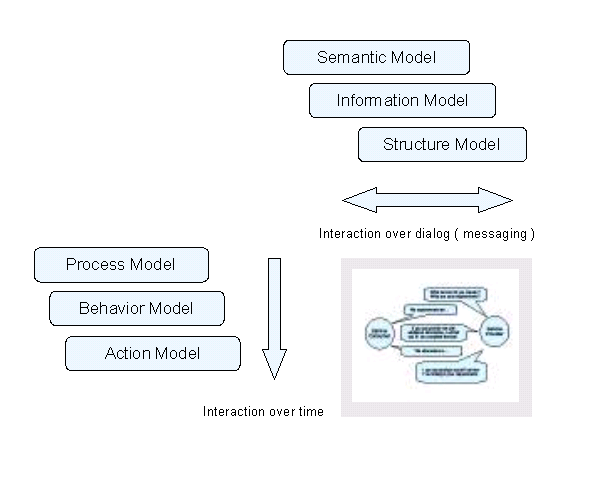A Note About "The Models"
The Reference Architecture describes the types of modeling tools one might employ in designing SOA services. The models are loosely defined to cover a wide range of possible tools and methodologies and, consequently, should be regarded as suggestive rather than indicative of how one would go about modeling an SOA-enabled application.
The six models can be classified very roughly into two types: those models that facilitate interaction and communication between service consumer and provider and the models that control the overall flow of the interactions over time.

Interaction or Communication Models
Semantic Model - "The formal descriptions of terms and the relationships between them (e.g., an ontology) provides a firm basis for selecting correct interpretations for elements of information exchanged. For example, an ontology can be used to capture the alternate ways of expressing the name of a city as well as distinguishing a city name from a street name. The extent to which one system can effectively interpret information from another system is governed by the semantic engagement of the various systems".
Information model - "The information model of a service is a characterization of the information that may be exchanged with the service".
Structure Model - "There are several levels of such structural information; including the encoding of character data, the format of the data and the structural data types associated with elements of the information".
Temporal or Process Models
Process Model - "The process model characterizes the temporal relationships and temporal properties of actions and events associated with interacting with the service".
Behavior model - "This is characterized as knowledge of the actions on, responses to, and temporal dependencies between actions on the service".
Action model - "The action model of a service is the characterization of the actions that may be invoked against the service. Of course, a great portion of the behavior resulting from an action may be private; however, the expected public view of a service surely includes the implied effects of actions".